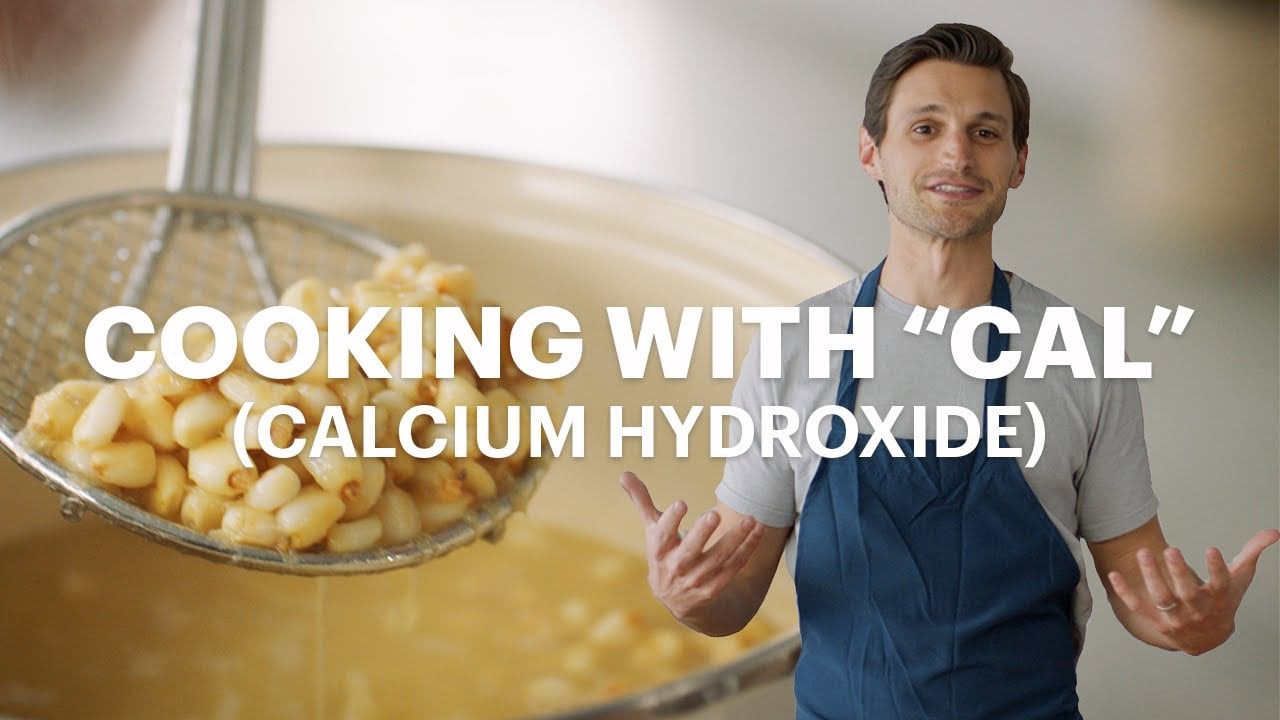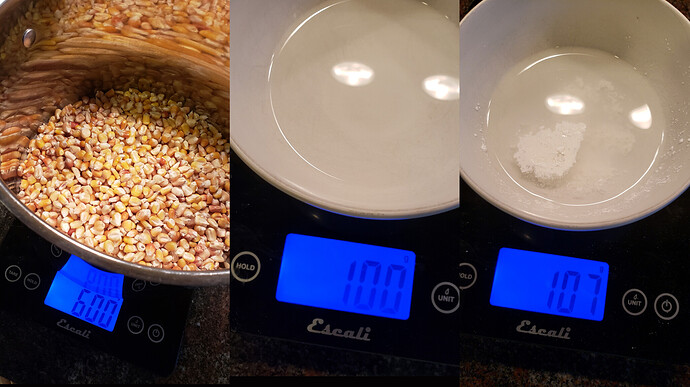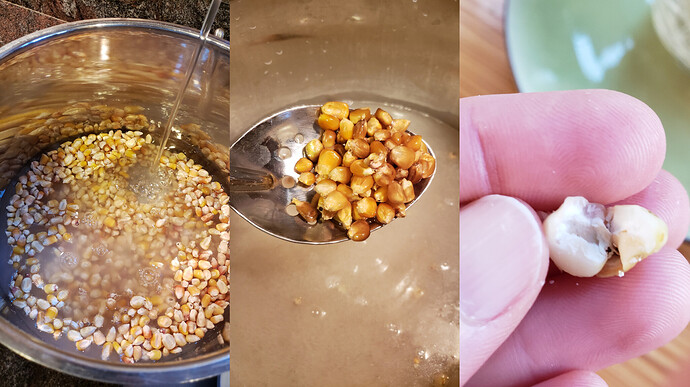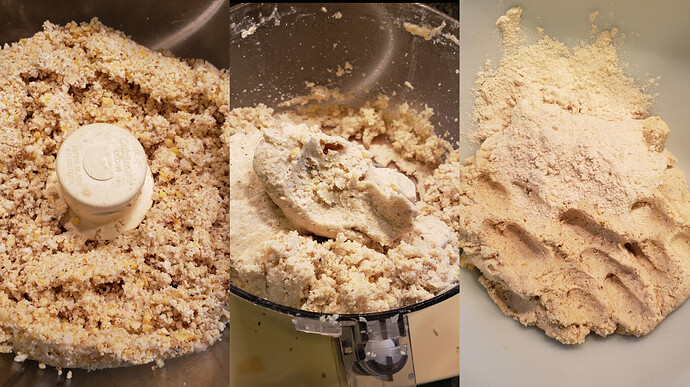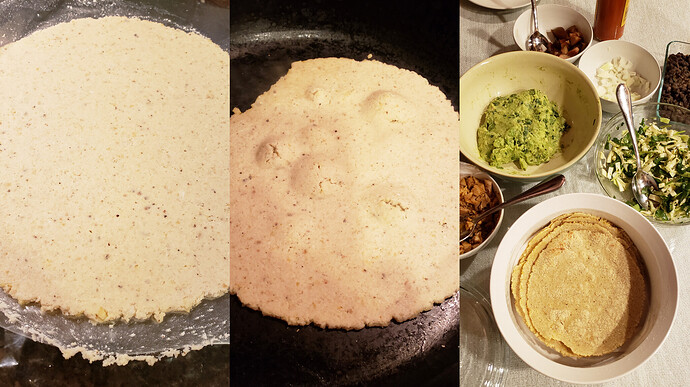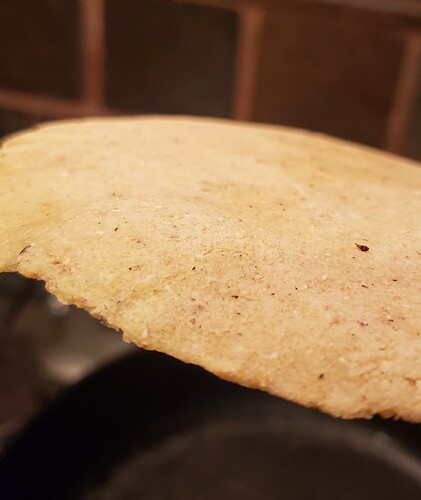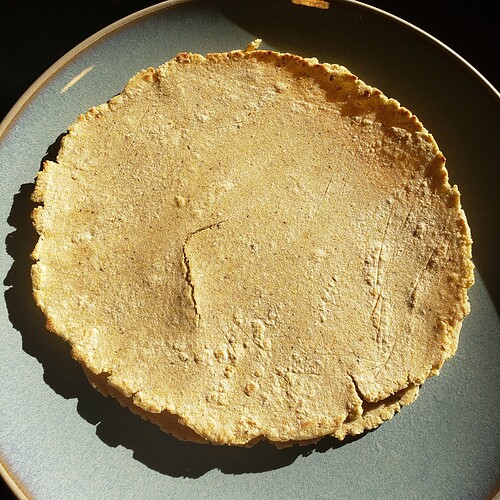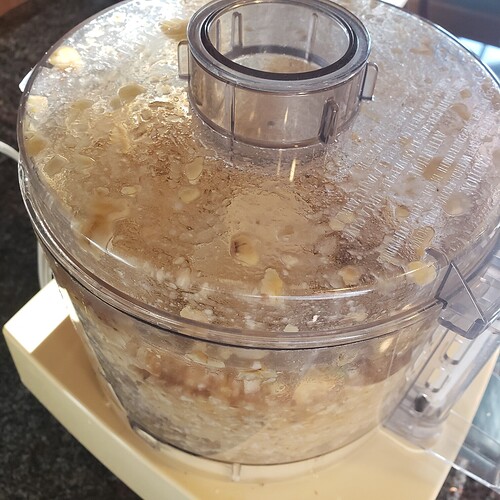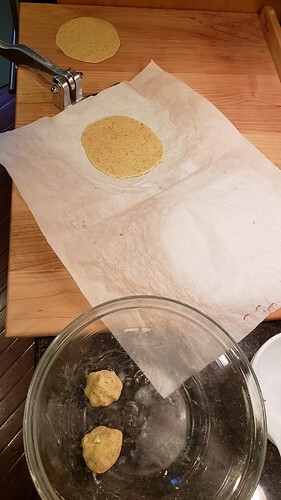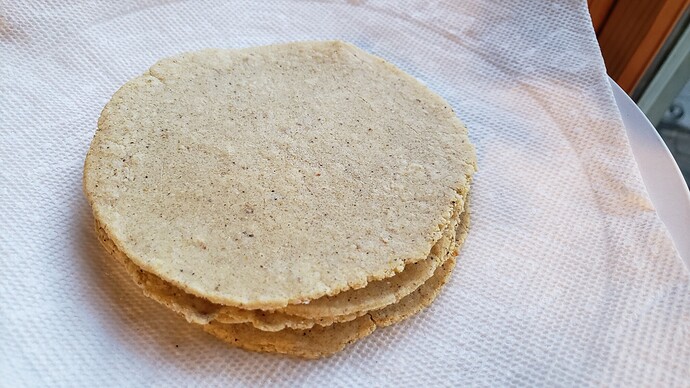I decided to start a new thread where I’ll share my experiences in nixtamalizing corn and turning it into harina (flour) or dough (masa) for tortillas. Please feel free to add your experiences and tips to the thread.
So far, I’ve nixtamalized 600g of mushito corn, following the video series of Masienda.
I weighed the corn at 600g in a non-reactive pan (stainless steel) and then calculated 1% of that to be 6g Cal/lime. To get my scale to register that and to dissolve the Cal, I measured 100g water, didn’t tare and then added 6(7)g Cal.
Then I poured the “slurry” into my pan of corn and added water to about 2 inches higher than the corn.
I brought it to a boil and then lowered it to simmer about 20 minutes. The skins were coming off easily when rubbed, but the inside still had some dry starch.
I took the pan off the heat, covered it and let it soak 9 hours. Then I rinsed off some of the skins and stored most of the corn in my refrigerator overnight. I put a small portion of the corn on parchment paper on a baking sheet in my oven with the light on to dry. (My baking sheet is aluminum, therefore reactive, so I think parchment is a must here.)
The next evening, I ground most of the refrigerated nixtamalized corn in my food processor. I had to add water to make it more effective, and even then I could feel hard/larger pieces in the meal. I added a small amount of masa harina, kneaded the dough, and left it covered while I made guacamole and spicy chicken, reheated black beans, made a cabbage salad, and chopped tomatoes and onions.
Before adding water, after water, some added masa harina
I formed the dough balls, flattened them with a tortilla press, and fried them. They were a little delicate, but the corn pieces were not hard, and the final tortillas were delicious and no one complained about the texture (except me… I’m going to try again).
Specifically, I want to see if I take the boil a little farther, will the food processor be more effective.
I also want to mill that corn I’m drying in my oven in my Mockmill and make a tortilla with it. I haven’t yet tested if it smashes and is dry enough.
